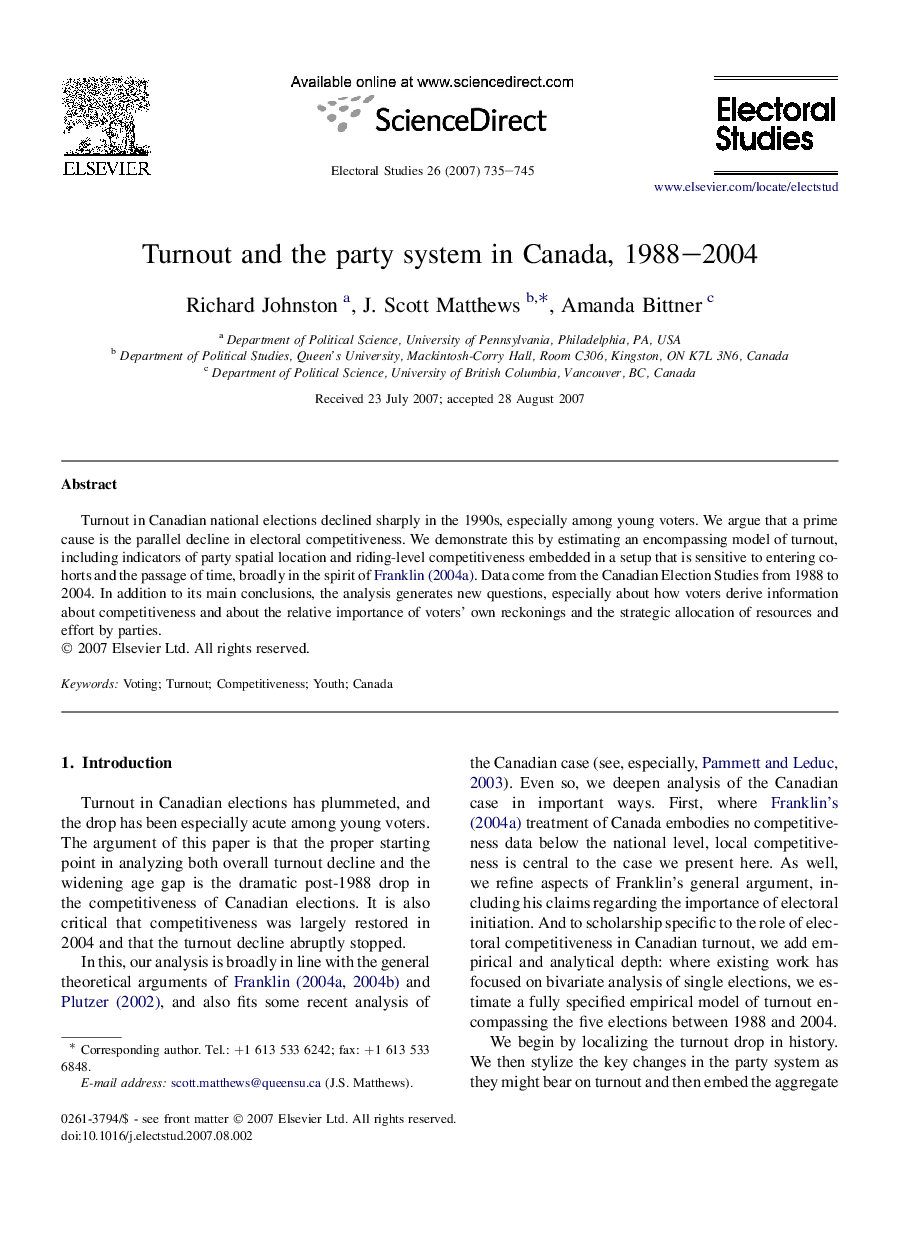| Article ID | Journal | Published Year | Pages | File Type |
|---|---|---|---|---|
| 1052205 | Electoral Studies | 2007 | 11 Pages |
Turnout in Canadian national elections declined sharply in the 1990s, especially among young voters. We argue that a prime cause is the parallel decline in electoral competitiveness. We demonstrate this by estimating an encompassing model of turnout, including indicators of party spatial location and riding-level competitiveness embedded in a setup that is sensitive to entering cohorts and the passage of time, broadly in the spirit of Franklin (2004a). Data come from the Canadian Election Studies from 1988 to 2004. In addition to its main conclusions, the analysis generates new questions, especially about how voters derive information about competitiveness and about the relative importance of voters' own reckonings and the strategic allocation of resources and effort by parties.
